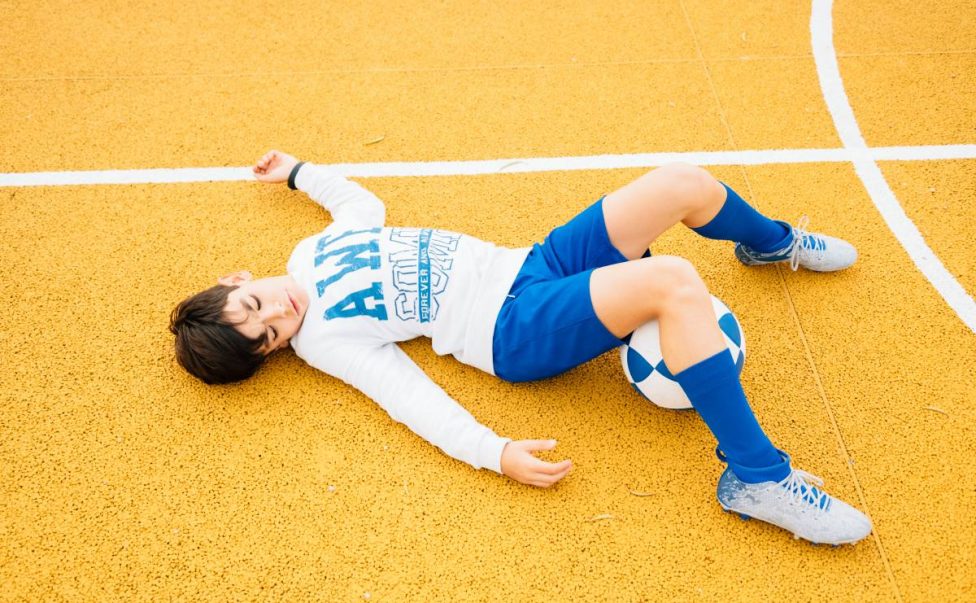ACL Soccer or Basketball ? The Main Cause of an ACL Tear?
The anterior cruciate ligament (ACL) is a crucial component in the stability and function of the knee joint enabling athletes to perform essential movements such as jumping pivoting and cutting.
However when the ACL is torn, it can have a devastating impact on an athlete’s career leading to long recovery times and even permanent damage.
ACL injuries are a common occurrence in sports that demand quick direction changes and high intensity movements but some sports carry a higher risk than others.
Understanding which sports result in the most ACL tears the underlying causes of these injuries and the specific risks faced by athletes is key to preventing and managing this potentially career ending injury.
What Sport Do You Tear Your ACL the Most?
Research suggests that certain sports have a higher incidence of ACL injuries than others. Generally ACL injuries are more prevalent in sports that require quick pivots jumps and changes in direction such as basketball soccer and football. These sports involve high intensity movements that place considerable stress on the knee joint, particularly the ACL.
Soccer
Soccer players face a significant risk of ACL injuries due to the frequent cutting pivoting and high impact collisions that occur throughout the game.
As players change direction quickly while dribbling defending or attempting to block shots, the strain on the knee joint increases, making it vulnerable to injury.
Basketball
Like soccer basketball is a fast-paced sport involving frequent jumps, pivots, and changes in direction.
Players often leap to block shots catch passes or make layups putting pressure on their knees upon landing.
The risk of ACL tears in basketball is high due to the explosive movements required during the game.
Football
Football is another sport with a high incidence of ACL injuries. Although contact is a significant aspect of the sport ACL injuries can also occur during non contact situations such as when players change direction or land from a jump.
The high speed collisions and sudden stops place significant stress on the knees, especially during cuts and tackles.
Skiing
ACL injuries are also common in skiing, particularly in Alpine skiing and snowboarding. The high speed nature of the sport and the risk of falls or sudden changes in direction contribute to the increased likelihood of ACL tears.
Rugby
Rugby is a contact sport similar to football in terms of its physical demands. Athletes are at risk of ACL tears due to the combination of rapid direction changes tackles, and falls.
2500 And 4000 PPM in Saltwater Pools?
How to Build Muscle by Consuming Whey Protein No Carbs?
Are ACL Injuries More Common in Soccer or Basketball?
Both soccer and basketball have a high risk of ACL injuries, with different causes. In soccer, ACL tears often occur during cutting, pivoting or awkward landings mostly in non contact situations.
In basketball injuries are more common during jumps and landings with sudden knee pressure causing tears.
While both sports have similar injury rates, basketball may have a slightly higher risk due to frequent jumping and landing while soccer injuries are more related to cutting and non-contact movements.
What Is the Number 1 Cause of an ACL Tear?
Understanding the primary cause of an ACL tear is essential for preventing injuries, especially in high risk sports.
There are several factors that contribute to ACL injuries, including biomechanical, anatomical and environmental factors.
However the number one cause of ACL tears is a sudden change in direction combined with a non contact mechanism.
Non Contact Injuries
Most ACL tears occur without direct contact, typically during rapid direction changes sudden deceleration or landings from jumps. These movements can cause the knee to rotate or twist overstretching or tearing the ACL.
The risk is particularly high when an athlete’s foot is planted and they suddenly change direction, placing excessive strain on the knee and preventing the ACL from stabilizing it.
Landing Technique
Improper landing techniques can significantly increase the risk of ACL injuries. Athletes who land with a straight knee or without bending their knees properly after a jump are at higher risk of tearing their ACL.
When landing with locked knees, the forces exerted on the knee joint increase, making it easier for the ACL to become damaged.
Muscle Imbalance
Another significant factor contributing to ACL injuries is muscle imbalance around the knee joint.
If the quadriceps are significantly stronger than the hamstrings the imbalance can place additional strain on the ACL making it more prone to injury.
Strengthening the hamstrings and improving the balance between these muscles is essential for ACL injury prevention.
Female Athletes
Studies have shown that female athletes are at a higher risk of ACL injuries compared to their male counterparts. This increased risk may be due to differences in anatomy, such as wider hips which place more stress on the knee joint.
Additionally, hormonal differences, landing techniques, and muscle imbalances may contribute to the higher incidence of ACL tears in female athletes.
Environmental Factors
The surface on which athletes play can also contribute to ACL injuries. Playing on artificial turf for instance has been associated with a higher risk of ACL tears compared to playing on grass.
The increased traction of artificial turf can cause the foot to become stuck leading to more stress on the knee joint during quick pivots and directional changes.
Conclusion
ACL injuries are common in sports requiring explosive movements, quick direction changes and jumping with soccer or basketball and football being the highest risk sports.
Non contact injuries often caused by sudden changes in direction improper landings or muscle imbalances are the primary cause of ACL tears.
Preventive measures like strength training, improved landing techniques and proper biomechanics can help reduce these risks.
Athletes and coaches should be aware of specific sport related risks to prevent ACL injuries, ensuring longer healthier careers.


